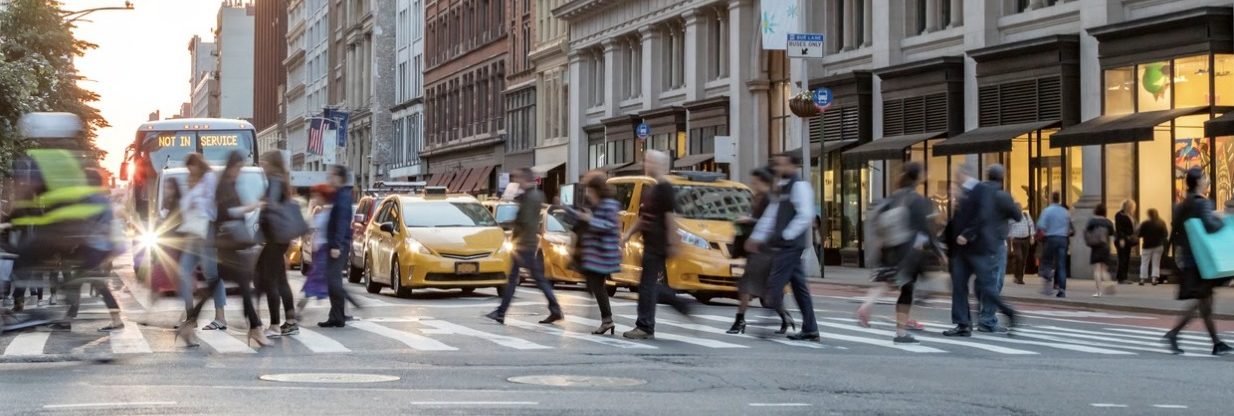
By: Lonnie Passy, Director, Firefly
Over the past 20 months, we’ve seen a pendulum effect happen in NYC and other concrete jungles across the US. The Covid-19 pandemic has changed mobility and transportation forever, specifically in America’s megacities that are home to some of the most visited business, entertainment, historical and political districts in the world. The hesitancy of commuting around large crowds, new office schedules and the growth of on-demand transportation have given consumers more flexibility to remap their daily journey. It’s also caused Madison Ave to reshape and reinvest smarter in their Out of Home advertising campaigns.
Millions like me who work, live and play in these city centres are reconfiguring their old, dreaded commute and “takin it to the streets” instead. This has resulted in more people relying on open air transportation such as walking and biking as well as on-demand transit like taxis and rideshares, all of which have limited exposure to having contact with strangers in person. According to Apple mobility data, walking has increased by 70% in every US city with a population of 1 million+. A Harris Poll study from April 2021 also reported that Americans continue to feel safe traveling by bikeshare (61%), taxis (51%) and rideshare (50%). In order to align with smarter mobility patterns, advertisers are investing heavily in street-level video formats like taxi tops, bus shelters and kiosks.
The reality of a new workplace is another reason why demand continues to explode for these Public video networks. The most popular days for physical office work now appear to be Tuesdays, Wednesdays and Thursdays and quality of life for employees has forced many companies to relocate to parts of a city to avoid their employees double commuting and adding another leg to their trip. With all this change, advertisers want to be more targeted and have more flexibility to deliver messaging in real time in order to engage with today’s office workers.
While quite a bit of OOH advertising is still analog, you will now see video screens on almost every city street, something that was a fantasy 5 years ago. Companies like Firefly and others have converted thousands of street level static billboards and posters to internet connected smart screens. This has allowed advertisers to create more dynamic and contextual digital experiences in real time so brands can connect with consumers on this new journey more often. Large cities like NY and others have become appealing again as tourism resumes and millennials and Gen zers move back.
The great digitization of our streets has also helped speed up the OOH industry’s recovery from 2020 as brands rely heavily on these digital formats via direct or programmatic buying exchanges. According to emarketer, Digital OOH Ad Spend will increase by $1 billion from 2019 to 2022 which should definitely outpace the growth of traditional (static) OOH.
Obviously the new mobility patterns are there for the taking but just how effective is this new format? According to a 2020 Nielsen report, street level DOOH delivers an extremely high call-to-action response with consumers as 69% of those who notice these ads engage in an activity such as visiting a store, searching online or streaming a movie or show. In addition, street level digital OOH drives in-store traffic sales extremely well with over 90% making a purchase after seeing an ad, something struggling retailers in big cities need to lean on more than ever.
Brian Rappaport, CEO of Quan Media, an independently owned OOH agency, told Firefly, “A few years ago, brands trying to reach the masses in cities like NYC, BOS & DC instantaneously thought about rail. It was their sole “go to.” With the continued evolution of DOOH – along with cities and infrastructure becoming more digitized, brands have multiple ways to hit their core consumer at the street level. The ability to utilize dynamic creative content, react in real time, and on top of it all – understand who’s being exposed/taking action has changed the game for brands looking to run an impactful OOH campaign in big cities. The future is bright as it relates to the continued growth and expansion of OOH.”
With 2021 almost in the rearview mirror, there are a few things that we can reflect on and look forward to in 2022 for this emerging vertical:
- Q3 saw a full recovery with several new categories entering the space such as crypto currency and NFT digital art.
- For the first time in almost 2 years, international tourism in the US resumed which will create a huge boost for our economy. The streets of big cities will be filled with shoppers and tourists getting into the Holiday spirit.
- With all the pent up demand, Q4 should exceed the same quarter we had in 2019, proving that our growth trajectory is back in big cities.
- The conversion from analog to digital will only continue and according to emarketer, 42% of all OOH revenue will be digital by 2023.
- With states like NY on the brink of legalizing online sports betting, 2022 should be a very good year for the OOH industry and all street level Video OOH formats.
Published: December 1, 2021